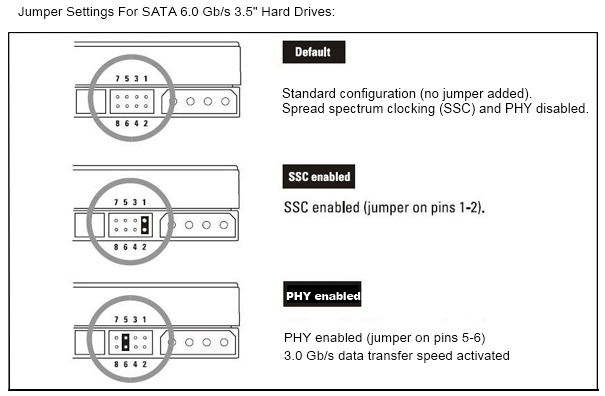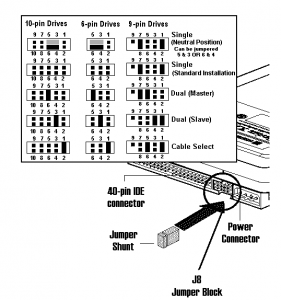Hard disk jumpers where a necessary nuisance in the IDE/(P-)ATA days. Not having the necessary jumper or not knowing their proper placement made the difference between a functional hard drive and one not getting recognized by the computer.
Fortunately, jumpers disappear in the S-ATA age. Well, almost…
Early SATA controllers had peculiar ways of functioning so manufacturers implemented failsafe/compatibility options in their later generation drives to make sure these newer drives are still usable on old boards. And they did this – yes! – using jumpers.
While totally unnecessary in everyday life, jumpers still need fiddling on modern S-ATA drives in some very peculiar, abstract, out of the ordinary (read this as “on an ancient motherboard”) usage scenarios.
Below are the jumper positions on modern-day S-ATA Western Digital drives enabling various options – the most important of which is SATA Compatibility Mode:
 These instructions also apply to 3.0 (SATA II) drives, setting the PHY meaning they will be limited (downgraded) to SATA I (1.5 Gbps) communication.
These instructions also apply to 3.0 (SATA II) drives, setting the PHY meaning they will be limited (downgraded) to SATA I (1.5 Gbps) communication.
And just to remember the past, here are the jumper settings for the good ol’ PATA drives:


